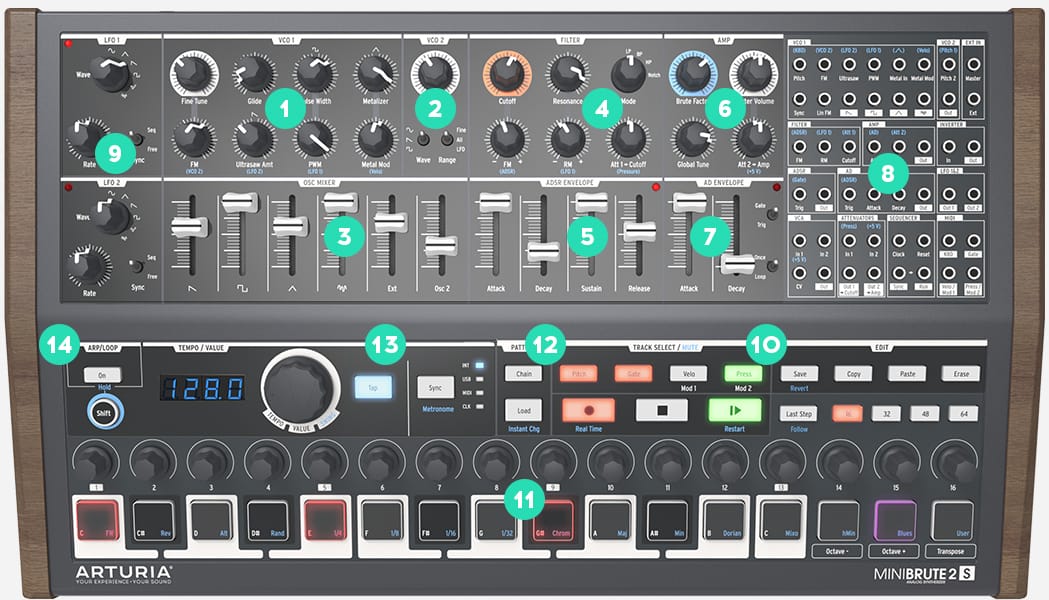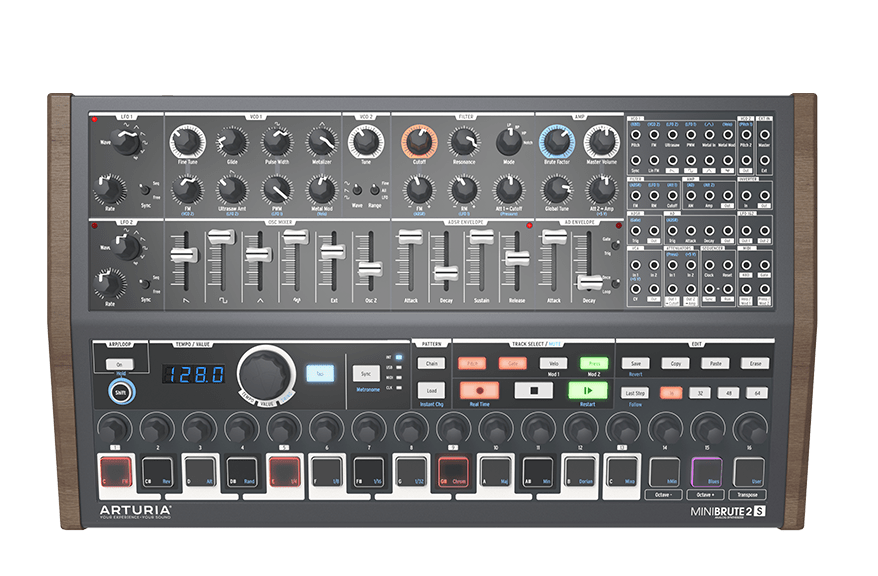

access to linear and exponential FM is a nice touch.just patched up a polyphonic patch following OscillatorSink’s video I’ve used the second VCO as a sub-oscillator 90% of the time so far.I love setting this to random to get some cool rhythmic movements. LFO1 automatically routes to both pulse wave modulation and resonance mod.the triangle waveform with the metalizer is really nice, opens up a lot of soft sounds.use an envelope mod track on the noise to make a snare sound but have this loop after every 9 steps. The number of steps on each track is independent, meaning it’s really easy to get some evolving/polyrhythm sounds e.g.

Send LFO to cutoff and parameter of your choice with only one patch cable… and this LFO can be ‘p-locked’ to have different depths and speeds.

A plays the original pattern whilst A# seems to be back to the major scale? B deffo changes too. If I switch back to chromatic whilst transposed to D# it plays the original sequence in D#… E just plays the original sequence in E… F and F# yield slightly different results so I’m guessing keeping in scale in the same way C and C# do. D# is identical to D in that it plays the sequence in D. However the behaviour is different depending where I transpose to… C# works but plays a slightly different set of notes yet going to D yields the same sequence as when in chromatic scale but just shifted up to a D. If I then transpose up to an F the pattern follows with the same note changes. Simple answer is yes I think? If I start a sequence in chromatic scale with a root note of c then switch to say major scale, the notes in the pattern change to reflect the scale change.


 0 kommentar(er)
0 kommentar(er)
